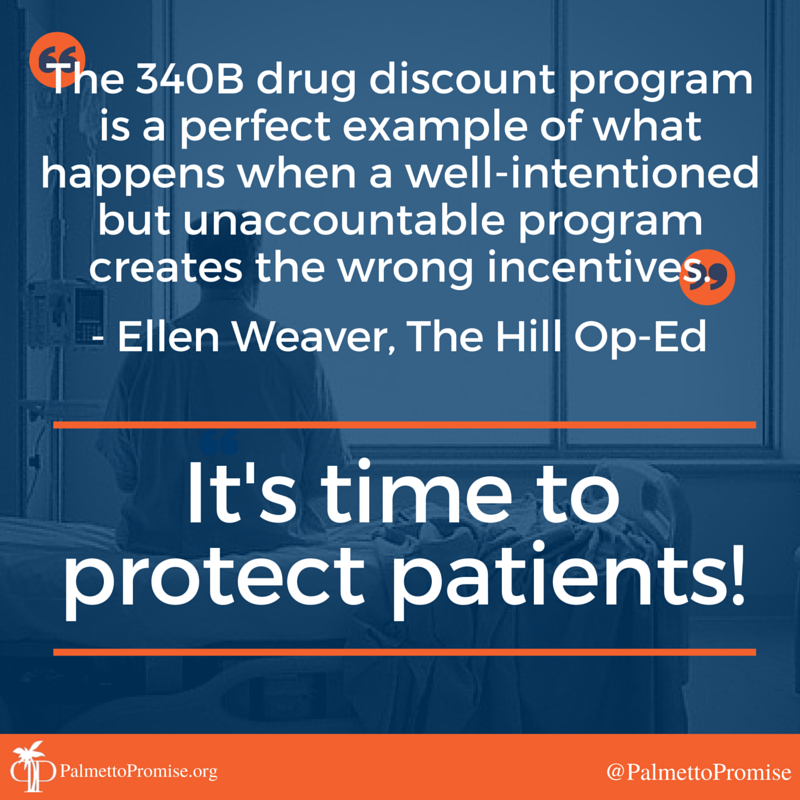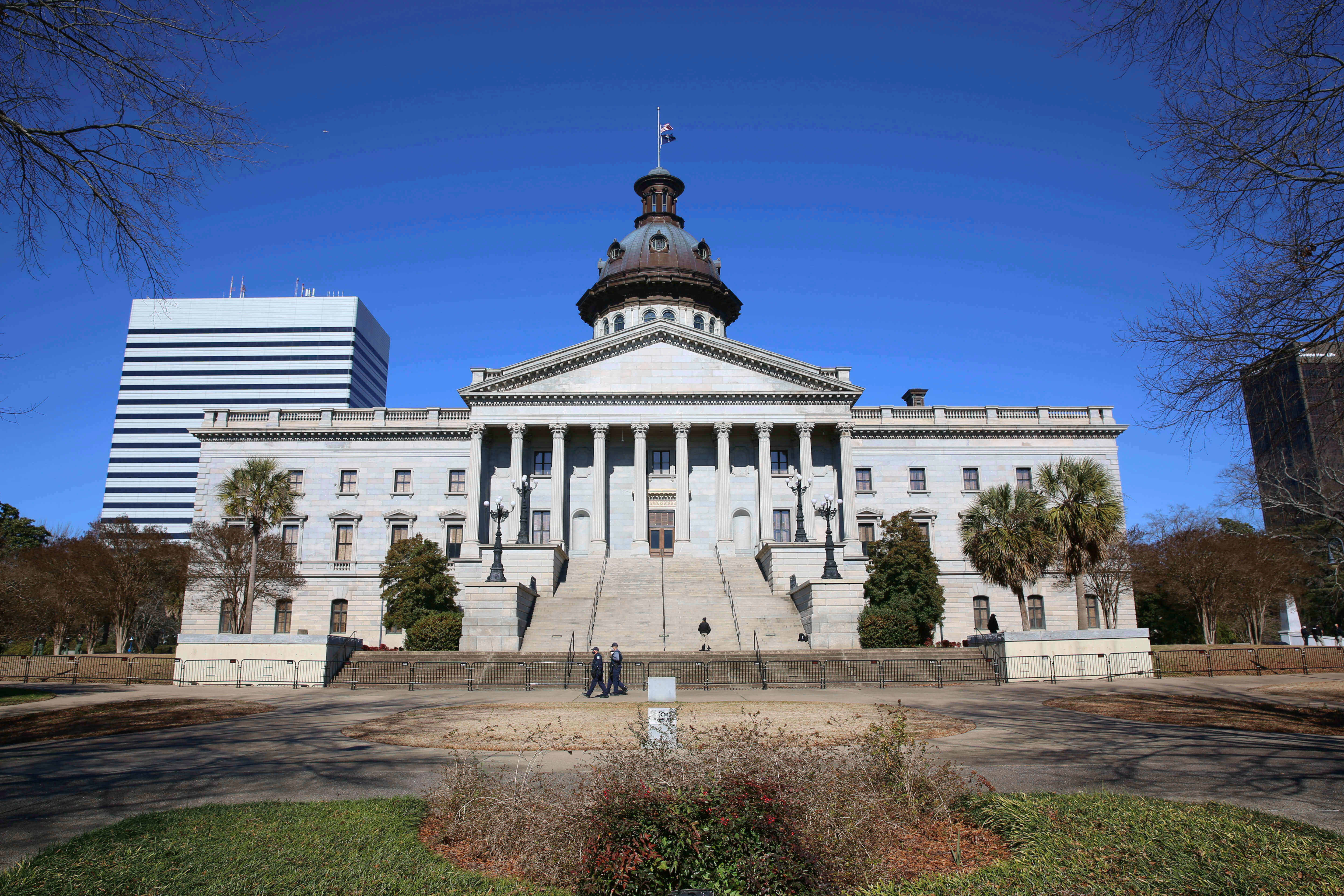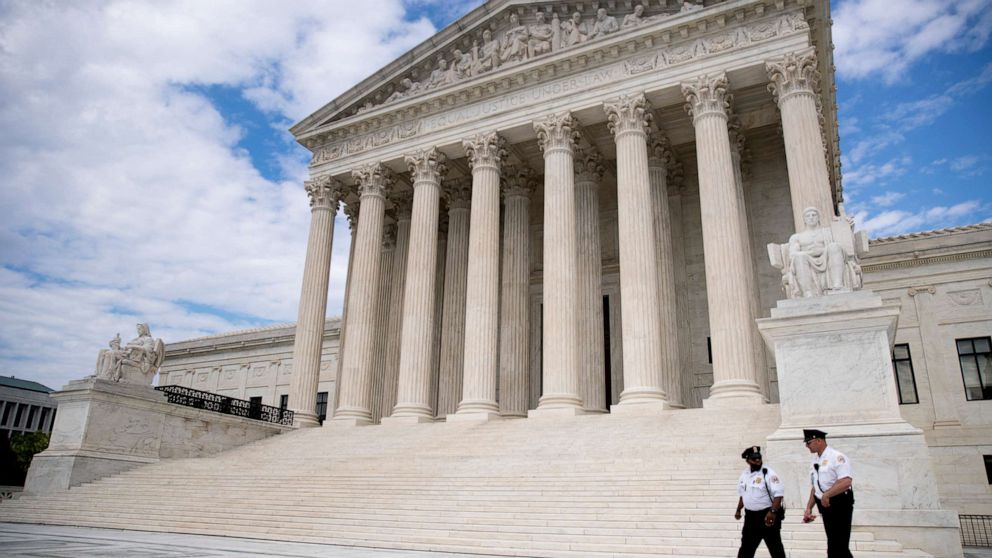Stop Hospital Abuse Of Federal Drug Discount Program

Ellen Weaver
This Op-Ed was written by Ellen Weaver and Lindsay Boyd and was published in The Hill on 6/15/16.
The presidential campaign has revealed widespread public anger about government programs that don’t seem to work as intended. Among the litany of concerns we hear in South Carolina and Tennessee is the affordability of prescription drugs, especially for poor uninsured or underinsured patients. One easy step Congress should take to answer these grievances: establish oversight and accountability for the 340B drug discount program that was meant to help low-income patients. It’s long past time to end its widespread abuse by hospitals seeking to fatten their bottom lines at the expense of these patients.
Congress created this program more than two decades ago to help low-income and uninsured patients afford prescription medications. It targeted hospitals serving large at-risk populations, qualifying them to receive discounts that knocked at least 22.5 percent off the cost of a prescription. The savings were supposed to help these hospitals provide better access to prescription drugs for low-income patients. In short, it was never intended as a general subsidy for hospitals.
But the law creating 340B never actually specified that hospitals were required to pass on the discounts. Hospitals quickly realized they could buy drugs at a discount and then sell them to insured patients who are not poor at the full price, thereby pocketing the difference. In most cases the insured patients don’t even know this is happening. Perhaps even more alarming, many don’t tell poor patients they are eligible to benefit from the program.
Not surprisingly, hospitals have taken maximum advantage of this loophole. A cottage industry of consultants makes a handsome living showing hospitals how to maximize their profits using the program. While the 340B program originated with 90 truly charitable hospitals participating, by last year almost half of all hospitals in the country were receiving discounts. Some hospitals have further capitalized on the program by buying up satellite clinics. By purchasing roughly 140 cancer clinics between 2009 and 2012, for example, participating hospitals were able to more than double the volume of their discounted drugs, according to the Institute for Patient Access. We’ve seen the effects of this phenomenon playing out in our states, where hospitals are swallowing up specialty oncology clinics, limiting the availability of care and driving up prices for all consumers.
The latest data shows that 340B discounts have ballooned in recent years, from over $1 billion in drug sales in 1997 to $12 billion last year. Yet, no one knows how much, if any, of the savings were passed on to patients, since hospitals aren’t required to report that figure. Sadly, this lack of oversight provides a perverse incentive to pad profit margins at the expense of the poor. A new study from the Berkeley Research Group found that fewer than two-thirds of 340B hospitals notified patients of their eligibility for charity care before setting debt collectors on them.
The Berkeley findings come on top of previous research that revealed that most 340B hospitals don’t actually serve large at-risk populations. One study found that fewer than a third provide charity care exceeding the national average. And last summer, the Government Accountability Office issued a report noting that the program creates an incentive for hospitals to maximize profits by prescribing more—or more expensive—drugs. GAO then tasked Congress with removing these perverse incentives.
If hospitals aren’t using the profits from the discounted drugs to provide greater care for the indigent, then where exactly are these dollars going? Rather than find the answer to this question and fix the problems when they had a clear chance, the authors of the Affordable Care Act only made it worse. In addition to making more hospitals eligible—the number of 340B hospitals nearly doubled between 2010 and 2014—they allowed hospitals to have a vast network of contract pharmacies. This network of pharmacies reaches into wealthier areas where patients are insured and hospitals can sell even more discounted drugs at a considerable profit. As a result, in the past two years alone, the volume of medications bought through this program shot up 67 percent.
In addition, uncompensated care, or services rendered by hospitals for which they cannot collect payment, as a percentage of hospital costs has remained almost flat for the last decade, yet their profits from the 340B program have exploded.
As the GAO suggested, this abuse is starting to get the attention of Congress. Last spring the House Energy and Commerce Subcommittee on Health held an oversight hearing–the first in a decade—to shed light on these perversions of the program and call for needed reforms in the program. And later in the year, Sen. Chuck Grassley (R-Iowa) called for hearings in the wake of the GAO report.
Congress needs to act, and act soon. Since we wrote about the need to reform this program a year ago, nothing has changed and the program continues to grow unchecked.
The 340B drug discount program is a perfect example of what happens when a well-intentioned but unaccountable program creates the wrong incentives. Fortunately, Congress can easily fix the problem and safeguard the poor, provided lawmakers are willing to do as voters in our states demand and stand up to the powerful hospital lobby.
Learn more about how we can improve healthcare in South Carolina here.




